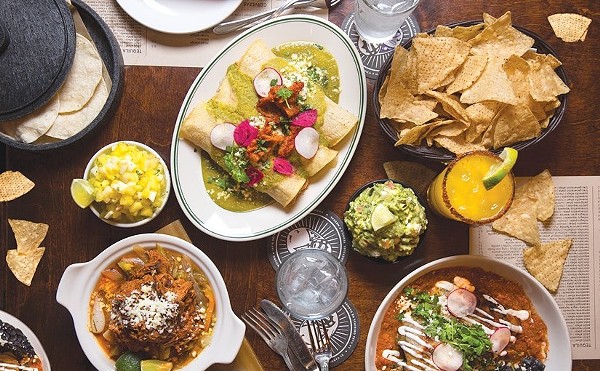Just as beer drinkers are wise to bolster their knowledge and appreciation of wine, so too are wine lovers well served by opening up their palates to embrace the attributes of great beer. And with the hot and muggy season upon us, what better time to begin the exploration? Before you get your grape-stained shorts all in a twist, nobody's saying that summertime wines aren't marvelous. A bright, lively albariño between dips in the pool is just right, and lobster with white Burgundy is one of life's great pleasures. But after scooping divots on the back nine or powering the mower around that precious carpet of green, who in their right mind is going to upend a bottle of pinot bianco to cool off?
So, if you're willing to concede at least a nugget of truth in what I'm saying, let's wrap our parched lips around some local, steamy day beer options.
The simplest approach to warm-weather guzzling is to look for anything with bitter, white, wit, weisse, weizen, wheat, Kölsch, lambic, summer or seasonal on the label. "Your list is like, totally incomplete," the beer geeks will shout. True, but we're trying to make it easy for the snooty grape heads.
Bitter, as in English bitters or special bitters, is a traditional ale style with a good but not overwhelming dose of hops, nicely balanced with some malty goodness and showing a touch of fruit. They're typically on the lower side in alcohol (a plus in the summer heat), light in body and gold to copper in color. Think of them like an IPA's little brother. A great local example is Great Lakes' Moondog ESB.
White, wit and weisse—all meaning, duh, white—are made with wheat (and maybe a measure of oatmeal) and often sport a complex, citrusy spiciness, rendering them stone-cold delicious and exceptionally refreshing. White beers come from Belgium or Germany or Cleveland, as in the case of Market Garden's thirst-slaying Pearl Street Wheat.
For a step up in flavor and personality ,turn your sights to the original European versions of wheat beers: weissbiers or hefeweizens. These gorgeous brews, often garnished with a slice of lemon, offer up notes of orange, banana and clove for a singular beer experience. Properly served, the glass should be capped off with a two- or three-inch marshmallowy head. We're particularly fond of Fat Head's Goggle Fogger hefeweizen.
Moving from "show" beers back to our original list, Kölsch describes a golden ale produced in Cologne, Germany, that is a soft, hoppy, kinda fruity, kinda bitter, kind of not, easy and delicious summer sipper. For a great local representation, sip into a glass of Willoughby Brewing's Kaiserhof Kolsch.
Lambics are Belgian throwbacks that are open fermented with wild yeast after a convoluted mashing process that leaves even beer folks scratching their heads. The result is a sour, somewhat earthy, carbonated brew that in overly simplistic terms is called "gueuze" when unflavored and "fruit lambic" when made with cherries, raspberries, cassis or peaches. Those fruit flavors are rich and pure, and the higher acidity makes these summer quaffers a perfect match for any number of foods. As part of Brew Kettle's "small batch funks series," Quick Kriek is a fun and funky brew with cherry notes.
Finally, we have the summer or seasonal variants. A common bit of nomenclature among American craft brewers, these are typically dosed with spice or fruit or a particularly interesting strain of hops. They're often "session beers"—made to refresh and encourage you to enjoy more than one. And most are excellent, a cut above the everyday pale ale or light lager. We're fond of Hoppin' Frog's Turbo Shandy, which revs up this typically light style with a bit more punch.
Now that you have some worthy options, consider trading in the wine stem for a pint glass now and then. There are terrific beers out there, and if there's one thing wine drinkers love, it's finding the next new taste. If you're not sure which ale or lager, which witbier or lambic to try, put together a mixed six pack. One of the beauties of beer is that it's generally inexpensive. You can mix and match and hold your own tasting of a half dozen possibilities for the cost of a single bottle of good wine.
Exploration and economics, a summer combo that's hard to beat!









